Lifestyle
US tariffs on Asian countries have shoppers at specialty supermarkets worried about prices
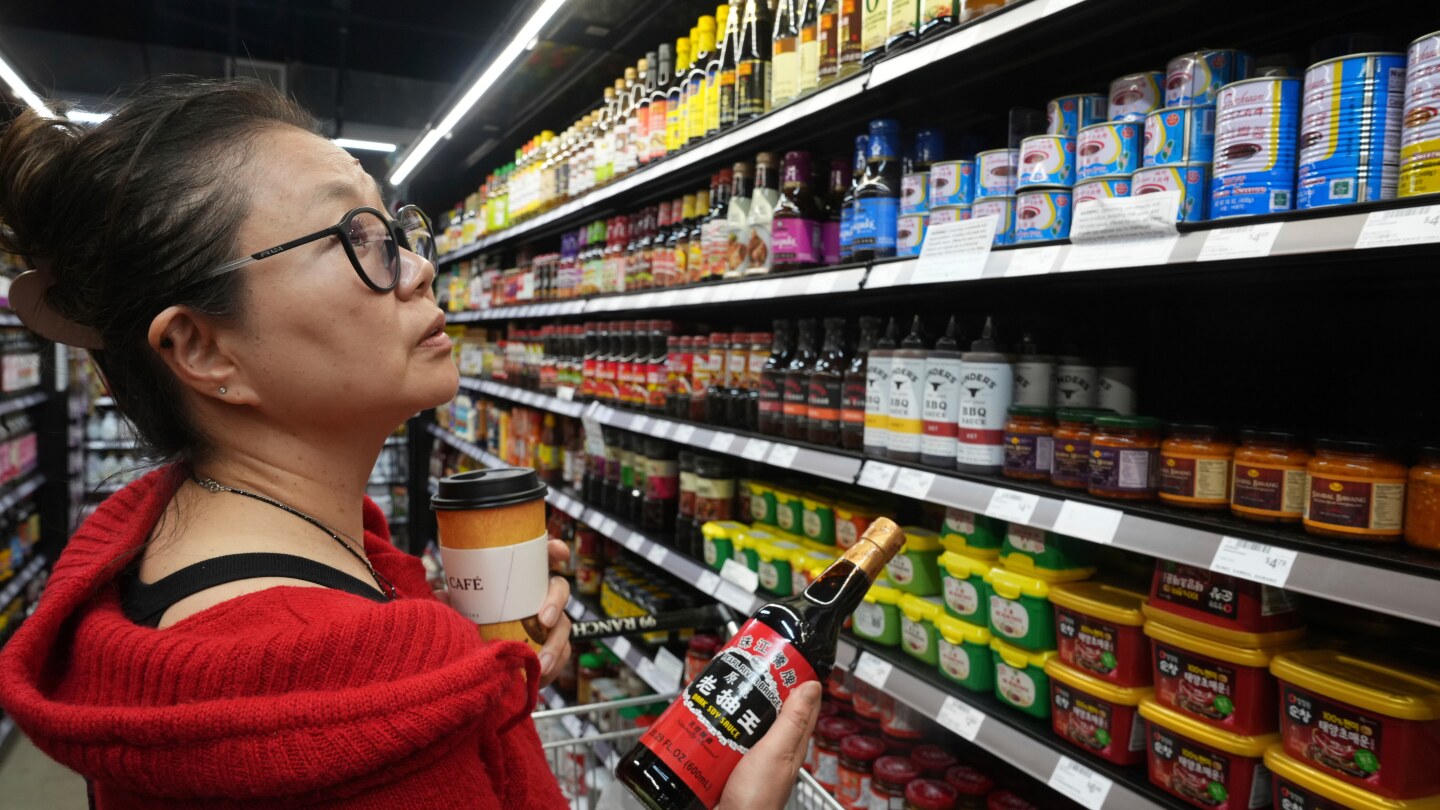
LOS ANGELES (AP) — Loyal customers of Asian supermarkets and other grocery stores that specialize in selling imported food heaved a collective sigh of dismay when President Donald Trump announced extra-high U.S. tariffs on goods from dozens of countries.
What would happen to prices at 99 Ranch Market and H Mart?, wondered Asian Americans and immigrants who shop at the two American chains for preferred brands like Japan’s Kewpie mayonnaise and China’s Pearl River light soy sauce.
“We’re all going to be crying in H Mart,” a TikTok user commiserated, referencing the title of a bestselling memoir by Korean American musician Michelle Zauner as other posters shared videos of their “pre-tariff hauls” from Asian supermarkets.
The steeper tariff rates Trump set for imports from nations he accused of unfair trade practices took effect first thing Wednesday along with a 10% baseline tax on products from the rest of the world.
Several countries in Asia have some of the largest levies, including South Korea (25%), Vietnam (47%) and Cambodia (49%). After China approved counter-tariffs and said it would fight a U.S. trade war “to the end,” the president on Tuesday raised the rate on Chinese goods to 104%.
At a 99 Ranch Market less than a mile from the UCLA campus, one of the California-based chain’s 58 stores, regular shopper Artis Chitchamnueng said he won’t be able to go anywhere else to find the foods he likes if prices skyrocket.
“I think (Trump’s) just like playing a lot of like mind games of just trying to like take control of the market and stuff like that,” Chitchamnueng, a part-time worker and entrepreneur, said. Many customers have said on social media they don’t know if they will be able to continue doing their routine grocery shopping at 99 Ranch Market.
Even if mainstream grocers stock some of the same items, a lot of imported items are less expensive at the specialty supermarkets. An 18-ounce bottle of Lee Kum Kee Panda oyster sauce, for example, retails for $3.99 at 99 Ranch. The websites for Safeway and Walmart list the same bottle for $4.79 and $10.45, respectively.
The stores stocking a wide range of noodles, dried vegetables, herbs and skin care products from China, Japan, South Korea, Thailand and Vietnam can be a source of comfort for immigrants and foreign students craving the tastes of home.
Tony He, an international student at UCLA, said Trump’s tariff policies confused him but he would continue shopping at 99 Ranch to get his groceries if prices increase. “As long as I need Asian food, I usually come here,” He said.
Shopping for culturally specific foods, drinks and condiments in the U.S. has come a long way from the once-meager offerings found in the “ethnic food” aisles of American supermarkets. International supermarkets and small grocery stores across the country generated $55.8 billion in revenue last year, according to market research firm IBISWorld.
The sector has recorded an annual growth rate of roughly 3% since 2019, and an IBISWorld forecast predicted revenue for grocery stores with international brands would go up to over $64 billion by 2029.
Analysts attribute the increase in demand to the growth of Asian and Hispanic immigrant populations, as well as to the tastes of younger consumers who enjoy experiencing new flavors. Mass market stores and brands increasingly have stocked or created Americanized versions of Asian products to ride the trend.
The specialty rice used for sushi that mainstream supermarkets sell also is usually imported from South Korea, China or Japan, noted Nancy Qian, a professor of economics at Northwestern University’s Kellogg School of Management. She thinks tariffs may lead consumers to find alternatives for their favorite brands.
“When my parents first came to America in the ‘80s from China, they couldn’t really get the same type of rice as they did in China, So they switched to a different type of rice,” Qian said. “I think families and restaurants and people, they’ll do what it takes to make ends meet. And they’ll substitute foods. They’ll buy new foods.”
Independent shops that are integral to smaller Asian American communities are also bracing for a hit. The owner of Not Just Spices, a tiny South Asian grocery in Providence, Rhode Island, said he was concerned about rising costs for staple products such as basmati rice sourced from India and Pakistan, or the smaller-grained Kalijira rice from his native Bangladesh.
“When things are cheaper, people usually buy extra. Now they buy exactly what they need,” said Mohammed Islam, who has run Not Just Spices since 1998. “People are scared of spending any money because they don’t know what’s going to be happening.”
Trump announced a tariff of 37% on goods from Bangladesh, 26% on neighboring India’s products, 29% on items from Pakistan and a whopping 44% on imports from the island country of Sri Lanka, known for its cinnamon and other spices.
If he does have to raise prices as the tariff’s impacts start to hit supplies, Islam trusts his customers won’t blame him.
“People don’t complain because it’s already in the news,” he said. “It’s not like I’m the one who is raising the price.”
Customers at Hispanic supermarkets also may be shopping more carefully. Trump has repeatedly threatened to impose a 25% tariff on most imports from Mexico.
In Phoenix, roommates Andrew Colvin and Mario Aviles typically patronize Los Altos Ranch Market, where they say the bulk of the produce and snacks they buy are from Mexico. The sprawling supermarket, which includes a deli and a bakery, is one of the 115 stores the Heritage Grocers Group operates in six states.
“We expect pretty much everything to go up,” said Colvin, who was stocking up on Parrot canned coconut water, his favorite drink, in case the price goes up. “I probably eat 14 avocados a week. There’ll be a lot less of that.”
Aviles doesn’t want to shop elsewhere. If tariffs result in serious sticker shock, he is prepared to restrict himself instead.
“No more avocados, no more mangoes, no more orange,” Aviles said.
Some experts say it wouldn’t hurt to stock up on non-perishables within limits and individual household budgets. But shoppers need to avoid the “panic buying” that accompanied the start of the COVID-19 pandemic, which could create shortages and cause additional price increases, Qian said.
While it’s not yet clear how much of the tariffs will get passed onto U.S. consumers, researchers say any price increases would disproportionately affect low-income households.
“These are regressive taxes. And for the elementary reason that affluent people do not spend 100% of their incomes and disadvantaged people do,” Steven Durlauf, director of the University of Chicago’s Stone Center for Research on Wealth Inequality and Mobility.
Northwestern University’s Qian said the cumulative economic impacts of Trump administration tariffs may hold one possible silver lining if they bring people back to the cultural enclaves of major cities.
“If you think about the old Chinatowns, or the old, like, Little Italys of America,” she said. “The reason that those places became really important for their communities was because that was the only place where you can get the thing you wanted.”
___ Tang reported from Phoenix. Associated Press video producer Akira Kumamoto in Los Angeles, California contributed to this report. Associated Press writer Matt O’Brien in Providence, Rhode Island, contributed to this report.
Lifestyle
Sweets from the sky! A helicopter marshmallow drop thrills kids in suburban Detroit

ROYAL OAK, Mich. (AP) — It’s spring in Detroit — warm weather, a few clouds, and a 100% chance of marshmallow downpours.
The source? A helicopter zooming above the green lawn of Worden Park on Friday, unloading sack-fulls of fluffy treats for hundreds of kids waiting eagerly below, some clutching colorful baskets or wearing rabbit ears.
The children cheered and pointed as the helicopter clattered by on its way to the drop zone. Volunteers in yellow vests made sure kids didn’t rush in and start grabbing marshmallows until after the deluge was complete.
For anyone worried about hygiene, don’t fret. The annual Great Marshmallow Drop isn’t about eating the marshmallows — kids could exchange them for a prize bag that included a water park pass and a kite.
The marshmallow drop has been held for over three decades in the Detroit suburb of Royal Oak, Michigan, hosted by Oakland County Parks.
One toddler, Georgia Mason, had no difficulty procuring a marshmallow at her first drop, her dad Matt said.
“Probably the most exciting part was seeing the helicopters. But once we saw the marshmallows drop, we got really excited,” Matt Mason said.
“And, yeah, we joined the melee,” he said, “We managed to get one pretty easy.”
Organizers said 15,000 marshmallows were dropped in all.
The helicopter made four passes, dropping marshmallows for kids in three age categories: 4-year-olds and younger, 5-7-year-olds, and those ages 8 to 12. A drop for kids of all ages with disabilities came later in the day.
“We do it because it’s great for community engagement,” Oakland County recreation program supervisor Melissa Nawrocki said.
“The kids love it,” she continued. “The looks on their faces as they’re picking up their marshmallow and turning in the marshmallow for prizes is great.”
Lifestyle
AP report: Superman comics have religious and moral themes
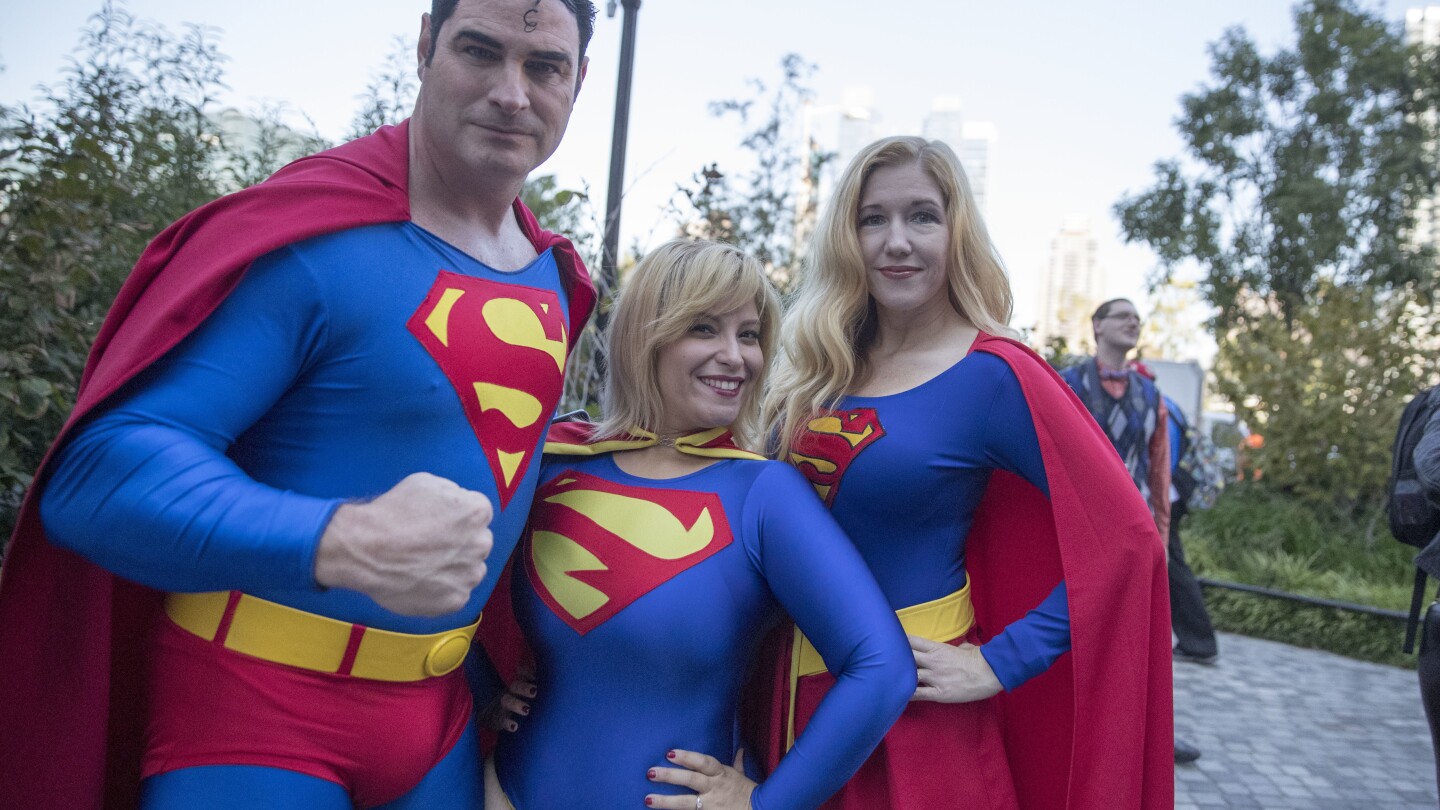
Superman comics are not overtly religious. Yet faith and morality have been baked into this superhero character who was born Kryptonian, raised Methodist and created by two young Jewish men in 1930s Cleveland.
Superman’s character has been portrayed in the mold of Christ and Moses given how he constantly upholds the ideals of self-sacrifice, powerful leadership and compassion. While scholars, comic book writers and fans alike are struck by the religious undertones in Superman comics, they all agree that what sets Superman apart is his ability to bring hope in a hopeless world.
Superman Day and the ‘Superman’ summer movie release
Friday (April 18) marks the 87th anniversary of the original superhero’s birth. It also is the date Superman made his debut in an Action Comics issue.
There is much excitement in the Superman fanverse this year because of the much-anticipated ‘Superman’ movie directed by James Gunn, starring David Corenswet, the first Jewish actor to play Superman in a major film.
On his Instagram page on April 18, 2024, Gunn shared a photo of himself, Corenswet and Rachel Brosnahan who plays Lois Lane in the upcoming film, reading among several comic books, a reproduction of Action Comics #1 — the very first one featuring the Man of Steel.
In his Instagram post, Gunn also paid tribute to the superhero, saying: “He gave us someone to believe in, not because of his great physical power, but because of his character and determination to do right no matter what.”
Gunn’s film promises a return to a version of a vulnerable Superman who is rooted in values espoused by most faiths — goodness, compassion and hope.
Superman’s Jewish roots
Samantha Baskind, professor of art history at Cleveland State University, is Jewish and sees numerous parallels between Superman’s origin story and the history of Jews.
She says Superman’s solitary flight from Krypton in a small spacecraft is reminiscent of how Moses’ mother placed him in a papyrus basket and left him on the Nile, seeing it as his best chance of survival.
Some also compare Superman’s backstory to the Kindertransport, she said, referring to a humanitarian rescue program that transported nearly 10,000 children, mostly Jewish, from Nazi-controlled territories to Great Britain in 1938 and 1939. In Superman’s Kryptonian name, Kal-El, chosen by his original Jewish creators Jerry Siegel and Joe Shuster, the “El” in Hebrew connotes God.
“There’s also the thinking that Siegel and Shuster created Superman because they were these two, skinny, young Jewish men who couldn’t go out and fight Hitler, but Superman fought Nazis on the cover of their comic books,” Baskind said.
In some early editions, Superman held Hitler by his Nazi uniform as he begged for mercy.
Strong appeal to diverse groups
Superman is relatable to diverse populations regardless of religion, race or ethnicity.
Gene Luen Yang, who has written several Superman comics, sees his own experience as a Chinese American mirrored in Superman’s story — caught between two worlds and two cultures. Yang says he had one name at home and another at school, just like Superman. So, even though he is a practicing Catholic, Yang says he relates more to Superman’s Jewish roots.
Despite the religious undertones, Superman also appeals to those who are religiously unaffiliated, said Dan Clanton, professor of religious studies at Doane University in Nebraska, adding that the superhero’s story “truly encapsulates American civil religion.”
Neal Bailey, a longtime contributor to Superman Homepage, a fan site, is an atheist. He views Superman as a “philosophical pragmatist” with the ability to solve the most complex problems with the least amount of harm.
“He actually goes beyond religion to see our commonalities,” Bailey said. “Superman wouldn’t care about people’s religious beliefs. He would care more about whether they are living up to their human potential.”
Superman inspires humans to do better
Grant Morrison, one of the best-known writers of Superman comic books, said in a 2008 interview that humans become what they imitate, which is why he made Superman an inspirational character.
Superheroes have received less-than-flattering treatment in recent films and television shows. For example, in “The Boys,” a comic book turned Amazon Prime series, the Superman-like character, Homelander, is a government-sponsored hero whose smiling exterior conceals the heart of a sadist. Gunn’s Superman is expected to change that trajectory with a superhero who will reinforce the character’s core value of preserving life at any cost.
An altruistic view of Superman can be found in the recently concluded “Superman & Lois” television series on the CW Network in which after defeating Lex Luthor in a final battle, the couple settles down in a small town and starts a foundation to help others.
“I didn’t just want to be a hero that saves people,” the Superman character played by Tyler Hoechlin says in an epilogue to the series. “I wanted to connect with them. To change their lives for the better.”
___
Associated Press religion coverage receives support through the AP’s collaboration with The Conversation US, with funding from Lilly Endowment Inc. The AP is solely responsible for this content.
Lifestyle
Fans of Superman relate to comic’s religious and ethical themes
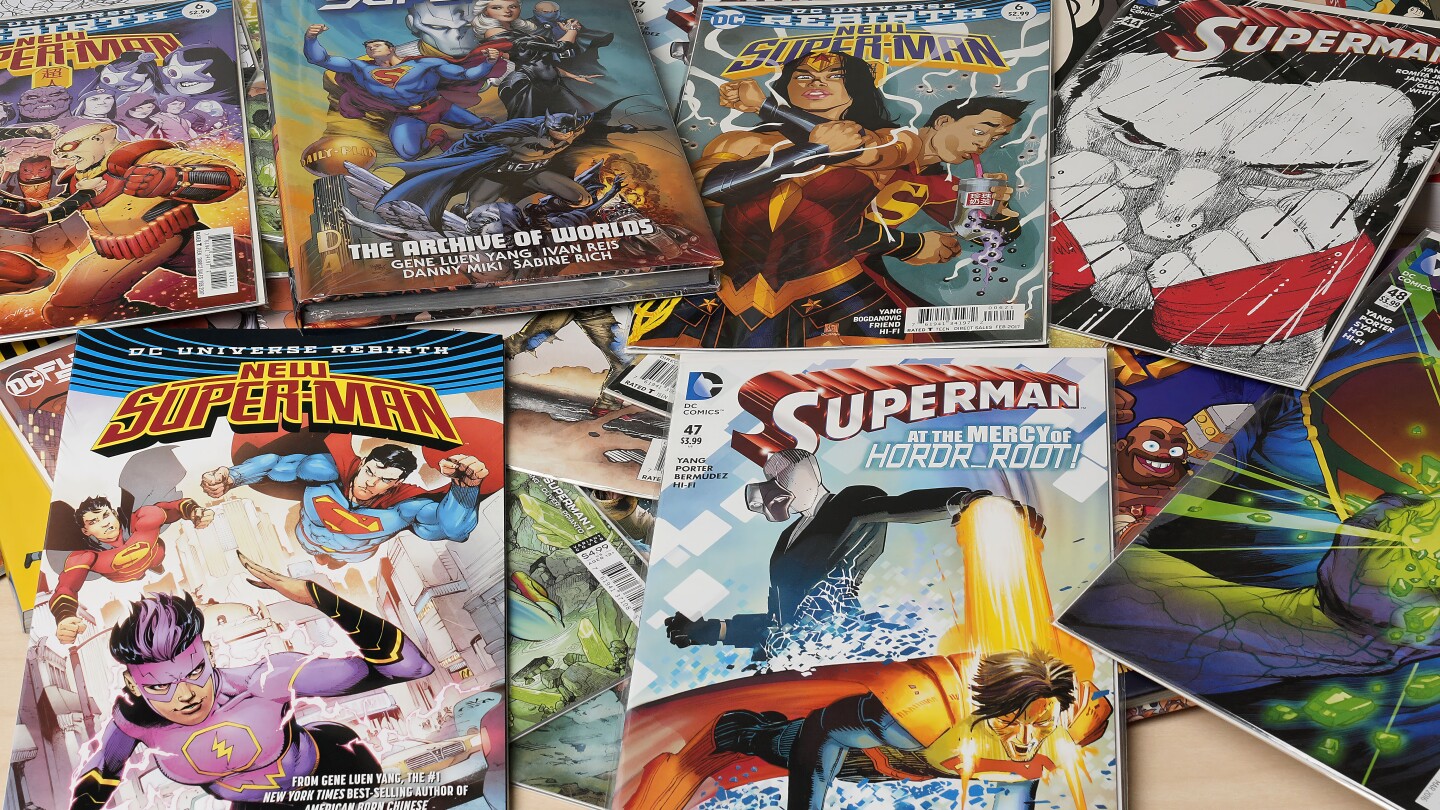
Superman was born Kryptonian, raised Methodist and sketched into existence by two Jewish teens in 1930s Cleveland. Faith and morality are his DNA.
There are no overt religious references in Superman comics. But over eight decades, he’s been viewed as a divine entity, a savior figure — his sacrifice Christ-like, his will to lead as strong as Moses parting the Red Sea, and his compassion akin to a bodhisattva, an enlightened being who guides Buddhists on the spiritual path.
While scholars, comic book writers and fans alike are struck by the religious undertones in Superman comics, they say what separates Superman from the ever-growing pack of superheroes is his singular ability to bring hope in a hopeless world.
James Gunn’s ‘Superman’ sparks conversation
As fans celebrate Superman Day on Friday, marking the 87th anniversary of the original superhero’s birth, they are also eagerly anticipating James Gunn’s film “Superman” set for release on July 11. This version starring David Corenswet, the first Jewish actor to play Superman in a major film, promises a return to a version of a vulnerable Man of Steel who is rooted in values espoused by most faiths — goodness, compassion and hope.
The film has sparked a conversation about the place of Superman in the world and his personal code of ethics after several recent depictions of superheroes as anti-heroes. Corenswet said in a recent interview to Fandango that what captivates him about Superman is how he chooses to see good in people and not dwell on the negative.
“Why think about all the terrible things when we can focus on the good things we did today?” he said.
In the same interview, Gunn said his Superman will reinforce the character’s core value of preserving life at any cost.
“He believes that the sanctity of life is of the utmost importance,” Gunn said, noting the contrast with Superman’s archnemesis Lex Luthor, who values scientific advancement over life.
Symbol of hope and positive masculinity
It was precisely this benevolent, hopeful version of Superman that inspired Robert Revington, who teaches at the Vancouver School of Theology at the University of British Columbia, to go skydiving in a Superman costume on his 28th birthday. And yet Revington, a Christian, balks at Christ-like portrayals of his favorite superhero.
“I like Superman and I like Jesus,” he said. “I don’t necessarily want to conflate the two. To me, the best depiction of Superman is as a symbol of hope.”
Revington also sees Superman’s relevance today as “an example of positive masculinity.”
“He’s this version of strong, but compassionate masculinity, which several prominent figures don’t necessarily embody,” he said.
Revington and many others’ beloved iteration of Superman appeared in “All-Star Superman,” a 12-issue series published by DC Comics between 2005 and 2008. The superhero saves a young person who is about to take their own life with the endearing message: “You are stronger than you think you are.”
Grant Morrison, who wrote those comics, has said his view of Superman was shaped by Giovanni Pico della Mirandola’s “Oration On The Dignity of Man,” which argues that humans ought to be more virtuous than angels.
Superman speaks to our better angels
Humans, Morrison said in a 2008 interview, become what they imitate, which is why he made Superman an inspirational character.
“We live in the stories we tell ourselves,” he told Newsarama, a comic book website, and can choose to be “the astronaut or the gangster. The superhero or the super villain. The angel or the devil. It’s entirely up to us.”
As a result, said Matthew Brake, founder and editor of Pop Culture and Theology, Superman “is an idea that can inspire us to be our best selves.”
Superman’s character is also shaped by his upbringing as a Kansas farm boy, raised by kindly parents — Jonathan and Martha Kent. They are portrayed as Methodists in the comics.
Superheroes, in recent decades, have received less-than-flattering treatment. In “The Boys,” a comic book turned Amazon Prime series, the Superman-like character, Homelander, is a government-sponsored hero whose smiling exterior conceals the heart of a sadist.
“Invincible,” a comic turned television series from Robert Kincaid, author of the “Walking Dead,” features Omni-man, a Superman-like character who turns out to be an alien invader bent on conquest. The main character, Invincible, is Omni-man’s son, and must choose between protecting the Earth or taking his father’s side.
“Dune,” the famed sci-fi book adapted into blockbuster movies, warns of superheroes’ frailty
“Heroes are painful, superheroes are a catastrophe,” Dune’s author Frank Herbert once wrote. “The mistakes of superheroes involve too many of us in disaster.”
A relatable superhero
But Superman has cemented his place in pop culture not just as a beacon of hope, but also as a character relatable to many, regardless of race or ethnicity.
Gene Luen Yang, who has written several Superman comics, is best known for his 2020 graphic novel “Superman Smashes the Klan,” a story about a Chinese American family moving to Metropolis in 1946 and facing discrimination from the Klan. The story follows the Lee family as they confront the white supremacist group with Superman’s help.
Yang sees his own experience as a Chinese American mirrored in Superman’s story.
“The idea that you have to hide who you are or that you’re caught in between cultures,” he said. “Superman has two names — Kal-El, his Kryptonian name and Clark Kent, his American name. I had a Chinese name at home and an American name in school. So even though I’m a practicing Catholic, I was more drawn to his Jewish roots because that’s where I could relate more.”
Yang sees Superman as the original superhero who inspired almost religious fervor in the geekdom, featuring cosplayers who reenact scenes as a Christian might reenact biblical episodes around Christmas or Easter. A trip to a comic convention is like a pilgrimage where followers collect original art and “all kinds of relics.”
Stories in pop culture also draw from older storytelling traditions, often rooted in religions.
“In some ways, you can think of religions as communities that are built around stories that last centuries,” Yang said. “The idea of self-sacrifice, the idea that you do good deeds without the desire to gain recognition. That’s the whole point of secret identities.”
While his Catholic faith is an important facet of his life, Yang said he never forced religion into his Superman comics.
“I write more about my life and my lived experience of faith, with the doubts and the ragged edges,” he said.
Characters like Superman, while not themselves religious, provide a portal to the sacred through the profane, said A. David Lewis, a Boston-based graphic novelist and comic book writer.
“I love that people take something from popular culture and find some level of spirituality or find a greater connection to some divine source through it,” he said. “But I would never say Superman is just of the Jewish or Christian people. Like some of the best narratives out there, Superman gives us access to something transcendent.”
Superman’s strong Jewish roots
Samantha Baskind, professor of art history at Cleveland State University, is Jewish; she sees numerous parallels between Superman’s story and the history of Jews. Superman’s solitary flight from Krypton in a little spacecraft is reminiscent of how Moses’ mother placed him in a papyrus basket and left him on the Nile, seeing it has his best chance of survival.
Some also compare Superman’s backstory to the Kindertransport, she said, referring to a rescue program that transported nearly 10,000 children, mostly Jewish, from Nazi-controlled territories to Great Britain in 1938 and 1939.
In Superman’s Kryptonian name, Kal-El, chosen by his original Jewish creators Jerry Siegel and Joe Shuster, the “El” in Hebrew connotes God. In DC Comics, Superman also frequents the “Bottle City of Kandor,” a Kryptonian city shrunk down and placed in a bottle, representing a fragmented piece of Krypton’s history. Baskind said to her it is reminiscent of how diaspora Jews visit Israel.
“There’s also the thinking that Siegel and Shuster created Superman because they were these two, skinny, young Jewish men who couldn’t go out and fight Hitler, but Superman fought Nazis on the cover of their comic books,” she said. In some early editions, Superman held Hitler by his Nazi uniform as he begged for mercy.
Appeal to the religiously unaffiliated
Despite the religious undertones, Superman’s appeal to those growing religiously unaffiliated remains strong, said Dan Clanton, professor of religious studies at Doane University in Nebraska. He says it’s because Superman’s story “truly encapsulates American civil religion.”
“This idea that there are practices and beliefs that provide all, regardless of religious identity, with a sense of being part of something bigger than themselves,” he said.
Neal Bailey, a contributor for over a decade to Superman Homepage and an atheist, believes Superman at his best is a “philosophical pragmatist” solving the most complex problems with the least amount of harm.
“He actually goes beyond religion to see our commonalities,” he said. “Superman wouldn’t care about people’s religious beliefs. He would care more about whether they are living up to their human potential.”
___
Associated Press religion coverage receives support through the AP’s collaboration with The Conversation US, with funding from Lilly Endowment Inc. The AP is solely responsible for this content.
-

 Conflict Zones2 days ago
Conflict Zones2 days agoHaiti in ‘free fall’ as violence escalates, rights group warns | Armed Groups News
-
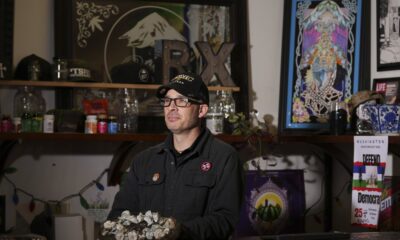
 Lifestyle2 days ago
Lifestyle2 days agoBelievers say microdosing psychedelics helps them. Scientists are trying to measure the claims
-

 Lifestyle2 days ago
Lifestyle2 days agoPicking a team from bars to beam and hoping for 10s: Fantasy leagues in gymnastics are a thing
-
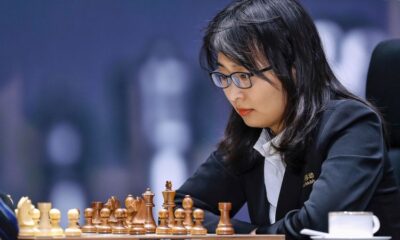
 Sports2 days ago
Sports2 days agoJu Wenjun: Chinese grandmaster makes history by winning fifth Women’s World Chess Championship
-

 Middle East2 days ago
Middle East2 days agoPalestinian photographer Samar Abu Elouf wins world’s top photo prize | Gaza News
-

 Sports2 days ago
Sports2 days agoArsenal reaches first Champions League semifinal in 16 years, with Inter Milan also advancing
-

 Africa2 days ago
Africa2 days agoEuropean Union announces new asylum measures
-
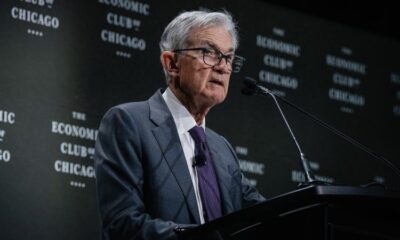
 Europe2 days ago
Europe2 days agoTrump blasts Fed Chair Powell, saying his ‘termination cannot come fast enough’




